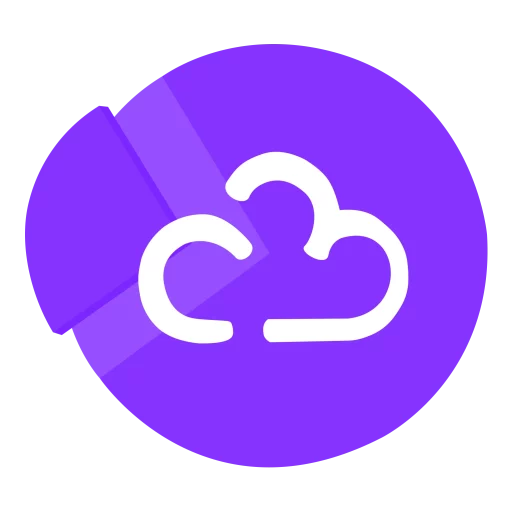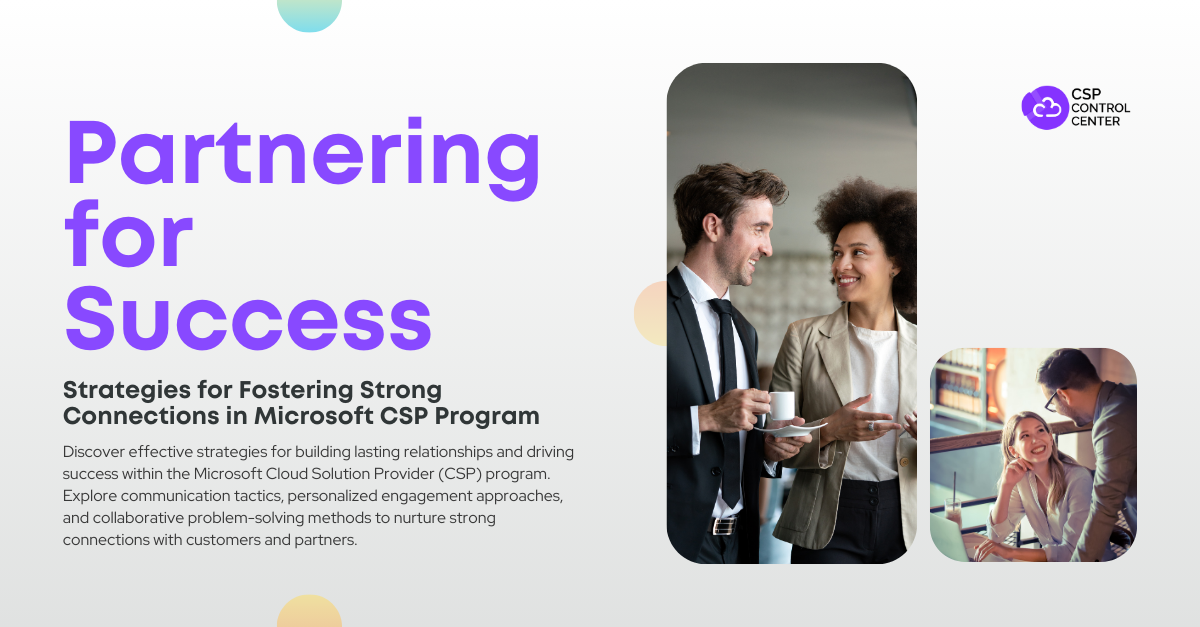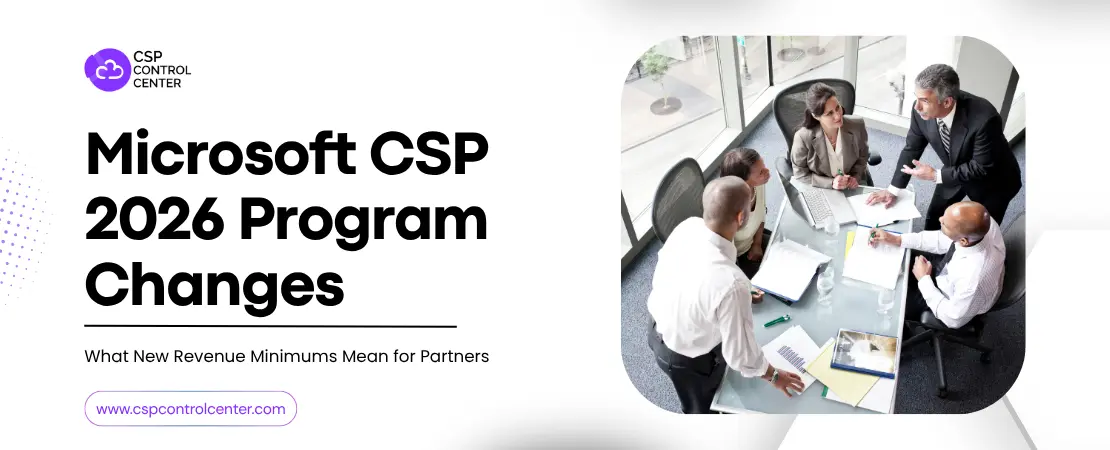The Microsoft Cloud Solution Provider (CSP) program enables partners to deliver cloud solutions to their customers. But just providing cloud services and solutions to customers is not enough. To succeed as a Microsoft CSP, you need to focus on building long-term relationships with your customers. You need to see beyond mere transactions and treat your customers as your partners. In this blog, we will talk about the significance of building strong relationships in the Microsoft CSP program, explore the journey of a customer from a prospect to a partner, and discuss key strategies for fostering long-term relationships.
Importance of building strong relationships within the Microsoft CSP program
Thriving in the Microsoft CSP program requires you to invest in building strong relationships within the Microsoft CSP program. There are several benefits of building strong relationships with your customers.
Becoming a trusted advisor
Nurturing your relationship with your customers helps you transition from a service provider to a trusted advisor. As a trusted advisor you gain deeper insights into the needs and challenges of your customers, provide strategic guidance, and become their go-to resource for all their cloud needs. This leads to increased sales and enhances overall customer experience and retention. Also, when customers trust your expertise, they become less focused solely on price and understand the value you bring to their business.
Improving customer loyalty & retention
A good relationship with your customers ensures that your customers keep doing business with you. Customer loyalty not only results in repeat business but also leads to referrals as well as positive word-of-mouth marketing which helps attract new customers. According to Esteban Kolsky, “72% of customers will share a positive experience with 6 or more people.” By improving customer retention, you can maintain a stable revenue stream that can help sustain the Microsoft CSP business in the long run.
Increasing revenue and profitability
Stronger customer relationships lead to increased trust which can drive sales impacting your revenue and profitability in the Microsoft CSP program. As customers trust you, they are more likely to place larger orders, explore additional services, and renew their existing contracts. Also, when customers trust you, they are less likely to stop doing business with you due to minor issues. This can significantly boost your income and contribute to the financial success of your Microsoft CSP business.
Streamlining onboarding process
Another benefit of building strong relationships in the Microsoft CSP program is streamlining onboarding and support processes. Having a good rapport with your customers makes communication easier and more efficient. As you understand the needs of your customers better, you can improve their onboarding process. Also, strong relationships build trust and confidence, making customers more open to your advice during the onboarding process.
Gathering valuable feedback and insights
When you have a good rapport with customers you get access to valuable feedback and insights into what your customers are looking for. This helps you identify areas of improvement, understand evolving customer needs, and refine your offerings to meet those needs better. These insights can help you anticipate and address potential issues before they become larger problems. This demonstrates that you are committed to providing the best services to your customers. Customer data can also help drive business growth, you can learn more about this here.
Setting yourself apart in a competitive market
Strong relationships are crucial for standing out in a crowded marketplace. By building strong relationships with your customers, you will be able to personalize customer experience which will set you apart from the competition. The tailor-made solutions will be more relevant to address the business needs of a customer and position you as the preferred choice for customers looking for cloud solutions.
How to build stronger relationships at different stages of the customer journey within the Microsoft CSP program
Building strong, long-lasting customer relationships is the cornerstone of a successful Microsoft CSP business. However, fostering these relationships requires dedicated efforts at every customer journey stage. Here’s a breakdown of simple strategies for building relationships in every phase of the customer experience.
Prospect Identification
Identifying prospective customers is the first step towards partnership it involves shortlisting potential customers who can benefit from Microsoft’s cloud solutions. Market research, networking events, inbound inquiries, etc. can help in identifying potential customers. When reaching out to potential customers avoid using generic marketing messages. Instead, utilize the data you have to tailor messaging based on the prospect’s industry, company size, and potential cloud needs. Customizing your outreach demonstrates to the prospect that you’ve dedicated time to understanding their needs and leads to meaningful interactions.
Lead Nurturing
Once you have identified prospects, the next step is to nurture those leads. You can do this by actively listening to them to learn about their unique requirements and pain points. You can also provide valuable information and resources such as white papers, case studies, or blog posts that show how cloud solutions can address their challenges. Doing these things fosters trust and positions you as a helpful advisor.
Opportunity Development
In this stage of the customer’s journey, you need to shift your focus to understanding the specific requirements of prospective customers and identifying opportunities where your solutions can add value to their business. Rather than simply suggesting solutions to customers, adopt a collaborative approach to needs assessment that actively engages the customers. This will make your customers feel involved, and valued and will give them a sense of ownership over the decisions being made. When you involve customers in the process of finding solutions the chances of the outcome aligning with their business needs increase. This helps build confidence and strengthen the partnership.
Solution Designing
After assessing the customer’s requirements and business objectives, the next step is to design a solution that effectively caters to those needs. As a Microsoft CSP, you have the unique advantage of developing customized solutions for your customers. You can showcase the extensive Microsoft cloud portfolio highlighting how different services can address specific needs. Explore integrating valuable third-party solutions or your custom services to effectively address business requirements. This demonstrates that you are committed to finding the best solution for your customers. Also, offer your customers different licensing and pricing models such as the pay-as-you-go option. This shows that you prioritize finding the most cost-effective solution and positions you as a trusted advisor.
Customer Onboarding
A smooth onboarding experience is vital for successful cloud adoption. Develop an onboarding plan outlining the timelines, milestones, training, and roles and responsibilities of both parties. The onboarding plan must be communicated to the customers. By providing customers with a well-organized and efficient onboarding process, you demonstrate your expertise and reliability. Proactive communication during the onboarding process also helps build trust. You should also address any concerns raised during the onboarding process promptly, showing that you provide exceptional service and support.
Sustaining Long-term Business Partnerships
Building and nurturing business relationships with your customers does not end with initial onboarding. It requires ongoing efforts to deliver value, exceptional customer service, and adapting to their evolving needs and challenges. To sustain long-term business relationships, you should:
Prioritize customer engagement
Regularly checking in to discuss the progress of customers, gathering feedback, and sharing valuable insights, industry trends, best practices, etc. are some of the ways to keep your customers engaged. You can send out e-mails, newsletters, schedule calls, meetings, webinars, etc. to connect with your customers. Continuous customer engagement fosters deeper connections and provides you an opportunity to inform your customers about your latest offering and collect their feedback to improve your services and develop new solutions.
Resolve issues promptly
Ensure that customer inquiries and issues are addressed promptly and effectively. This will indicate your commitment to resolving their issues timely so that they face minimum business disruptions. Set up dedicated support teams/channels for customers to connect and get their problems solved. You can develop a knowledge base with FAQs and other resources on commonly faced issues and can also offer a self-service portal to your customers allowing them to manage their account and raise and track support tickets. According to a survey by infobip, “88% of customers expect to be able to use self-service support options when they interact with a business.” Learn more about providing different types of support to your customers here.
Ensure accurate and transparent billing
Accurate and transparent billing builds trust and minimizes billing-related disputes. You can use a Microsoft CSP billing automation tool to provide your customers with accurate, clear, and timely invoices. The invoice should have details of the subscription costs, usage costs, and any other charges. You can also leverage the extensive reports available in the Microsoft CSP billing automation tool to assess usage patterns and help customers optimize their cloud spending.
Use C3 to build strong relationships in the Microsoft CSP Program
Partnering with C3 gives you access to the ultimate Microsoft CSP billing automation solution that can help you manage your customer relationships more effectively. Here is how you can leverage C3 to build stronger relationships with your customers:
- Manage subscriptions with ease– simplified subscription management due to automating repetitive tasks frees up your team’s valuable time that can be used in building personalized relationships with customers.
- Streamline billing and invoicing- automated billing and invoicing ensure accuracy and timely delivery. This helps build trust and improve customer experience.
- Empower customers with self-service- self-service features provided by C3 empower your customers to access information about their subscriptions, track usage, and manage basic tasks themselves. As a result, your customer support team can prioritize resolving complex issues.
Contact us to learn more about building stronger relationships with C3.

 CSP Control Center
CSP Control Center
 CloudEvents
CloudEvents


